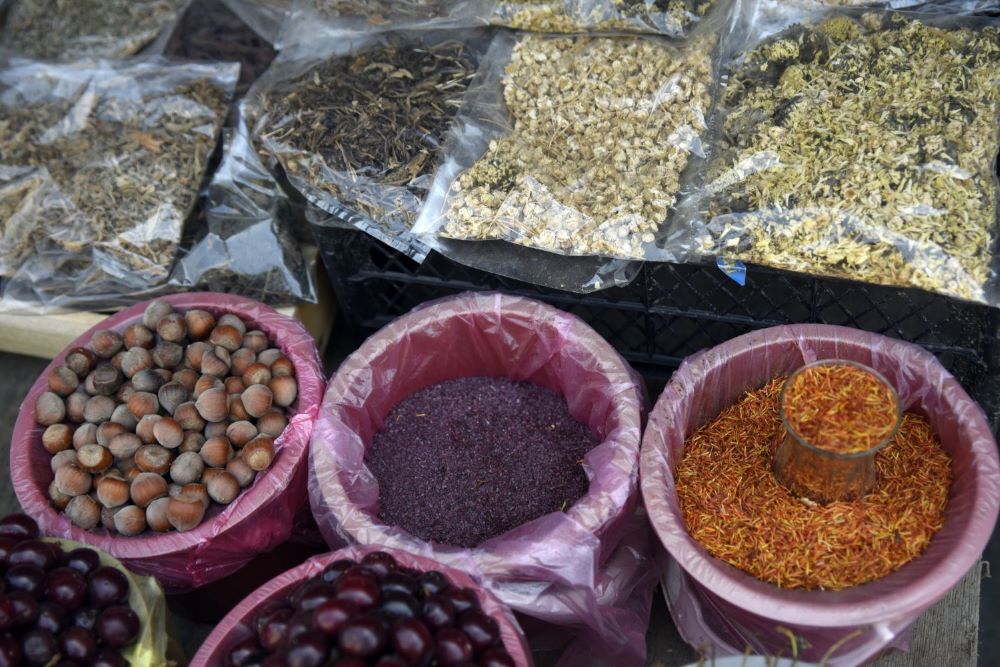FAO-WHO 44th session of Codex Alimentarius Commission adopts new standards
As part of the session from 8 to 18 November

Spices and other products in a street market
©FAO/Tofik Babayev
The United Nations food standards body Codex Alimentarius Commission is meeting virtually on 8-13, 15, 17 and 18 November 2021 to adopt food safety and quality standards.
Established in 1963, the Codex Alimentarius Commission is charged with protecting consumer health and ensuring fair practices in international food trade. It comprises 189 Members and 240 observer organizations, the Codex Alimentarius Commission meets annually to adopt food safety and quality standards and related recommendations.
Codex Committees and Task Forces have met virtually in 2021 to complete work on a range of standards which have been proposed for adoption by the Commission:
- Spices and Culinary Herbs
- Contaminants in Foods
- Methods of Analysis and Sampling
- Food Import and Export Inspection and Certification Systems
- Residues of Veterinary Drugs in Foods
- Pesticide Residues
- Food Additives
- Food Labelling
- Antimicrobial Resistance
More information on the progress made during the event will be available at this link.
The following standards were adopted during the 44th session of the Commission:
Revision to the 2005 Code of Practice to Minimize and Contain Foodborne Antimicrobial Resistance (CXC 61-2005)
Guidelines on Integrated Monitoring and Surveillance of Foodborne Antimicrobial Resistance
ADOPTED- 10.11.2021
The World Health Organization (WHO) has declared Antimicrobial Resistance (AMR) one of the ten greatest threats to global public health, as a result of the “systematic misuse and overuse” of antimicrobials. This threat includes foodborne AMR, which is the increased risk of untreatable illness resulting from the use of antimicrobials in the food chain. The texts adopted by CAC play a part in the “harmonized and immediate action on a global scale” that WHO calls for in its Global Action Plan on AMR as well as servings as a corner stone in the implementation of the FAO action plan on AMR and overarching tripartite efforts to address AMR in a One Health manner.
Guidelines on front-of-pack nutrition labelling (for inclusion as an Annex to the Guidelines on Nutrition Labelling)
ADOPTED- 10.11.2021
The guidelines provide general guidance to assist in the development of front-of-pack nutrition labelling, a form of supplementary nutrition information, as a tool to facilitate the consumer’s understanding of the nutritional value of the food and their choice of food, consistent with the national dietary guidance or health and nutrition policy of the country or region of implementation.
General standard for the labelling of non-retail containers of foods
ADOPTED- 10.11.2021
The standard is intended to facilitate appropriate harmonized labelling of non- retail containers of food and to outline what information shall be presented on the label and what information, while not required on the label, must be provided for a non-retail container by other means.
Guidance on paperless use of electronic certificates (Revised Guidelines for Design, Production, Issuance and Use of Generic Official Certificates)
ADOPTED- 09.11.2021
This guidance is intended to assist the competent authorities to develop and implement paperless electronic certification exchanges to attest that food presented for international trade has met the importing country requirements relating to food safety, and/or ensuring fair practices in the food trade. Harmonized guidance will allow broader participation and promote consistency and simplify the development process for countries developing electronic certification solutions. The COVID-19 pandemic had illustrated the importance of paperless use of electronic certificates and the urgency to complete the revision of these guidelines.
Principles and guidelines for the assessment and use of voluntary Third Party Assurance (vTPA) programmes
ADOPTED- 09.11.2021
The guidelines are intended to assist competent authorities within their national boundaries in the effective assessment and transparent use of reliable vTPA programme information/data in support of their national food control system (NFCS) objectives. They focus on the structure, governance and components of vTPA programmes that align with and support NFCS objectives relating to protecting consumer health and ensuring fair practices in food trade.
Standards for dried oregano, dried or dehydrated ginger, cloves, and dried basil.
ADOPTED- 08.11.2021
The implementation of these standards will help to facilitate the trade in spices and herbs, which has seen a significant recent increase in demand coincide with severe supply disruptions caused by the global pandemic.
Maximum levels of cadmium in chocolate
ADOPTED- 08.11.2021
The Maximum levels of cadmium in two classes of chocolate (containing or declaring ≤ 30% cocoa solids on a dry matter basis and containing or declaring > 30% and ≤ 50% cocoa solids on a dry matter basis) are based on global dietary exposure data assessed by JECFA. Cadmium is a toxic heavy metal that is found naturally in volcanic soils and water. Human dietary exposure to cadmium can therefore occur through eating fish/seafood or food derived from plants that easily absorb cadmium, such as cereals, vegetables and cocoa. JECFA concluded that the contribution of cocoa products to dietary cadmium exposure is minor (0.1–9.4%) even in countries in which the consumption of cocoa products is relatively high.
Further to the above-mentioned decisions, many food safety and quality standards were adopted. A list of Adopted Standards and Related Texts is available here.
Contact
FAO News and Media (+39) 06 570 53625 [email protected]
